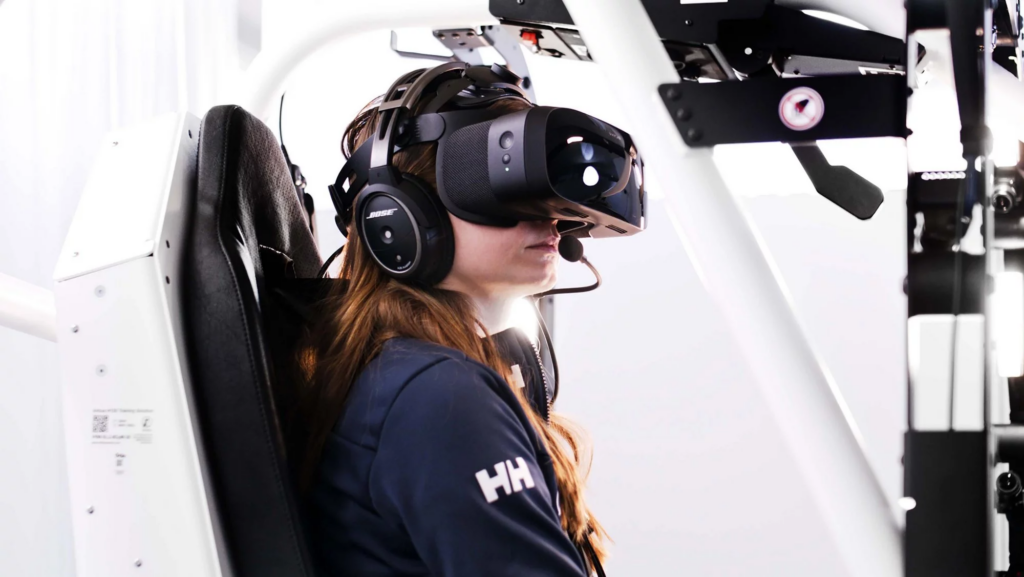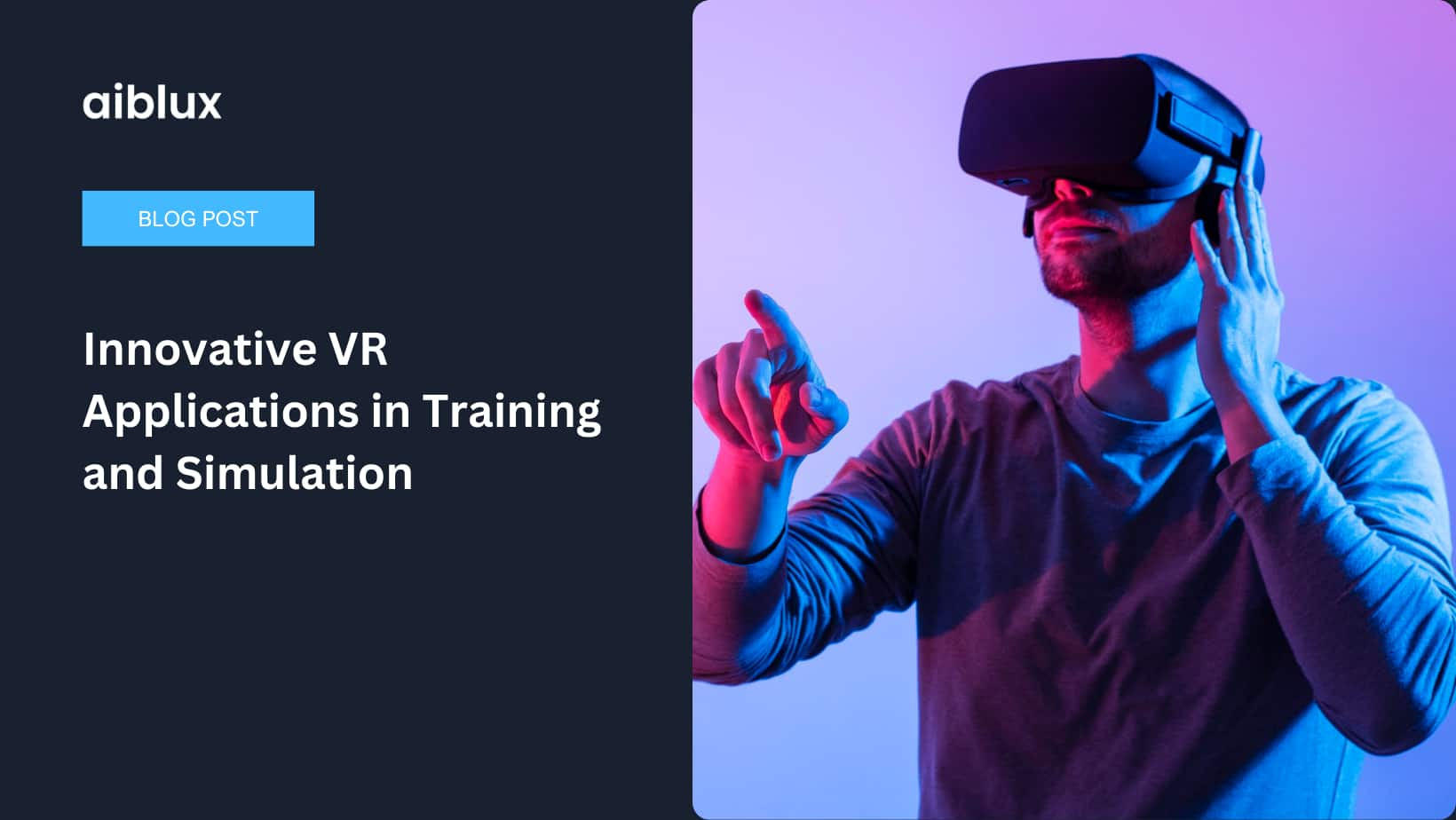Introduction
Virtual reality (VR) is transforming how organizations approach training and simulation. By immersing users in realistic, interactive environments, VR provides unparalleled opportunities for learning and skill development. At aiblux, we specialize in leveraging VR technology to deliver client-centric software solutions that enhance training outcomes across various industries. This blog explores the innovative uses of virtual reality in training and simulation, highlighting its benefits, applications, and the future of this cutting-edge technology.
The Benefits of Virtual Reality in Training
Enhanced Engagement and Retention
VR training programs offer immersive experiences that capture learners’ attention and improve information retention. Users can interact with 3D environments, making learning more engaging compared to traditional methods. For example, medical students using VR can practice surgical procedures in a risk-free environment, leading to better preparedness and confidence. Additionally, VR’s interactive nature allows for more active participation, which helps in retaining complex concepts and procedures.
Safe and Controlled Environment
One of the significant advantages of VR is the ability to create a safe and controlled environment for training. This is particularly beneficial in high-risk industries such as aviation and construction, where trainees can practice complex tasks without real-world consequences. VR simulations allow users to make mistakes and learn from them, reducing the risk of accidents and enhancing overall safety. Furthermore, VR can simulate emergency scenarios, preparing individuals to respond effectively under pressure.

Cost-Effective Training Solutions
Implementing VR training programs can be more cost-effective in the long run. Traditional training often requires physical resources, travel, and logistics, which can be expensive. VR eliminates these costs by providing a scalable and repeatable training solution. For instance, companies can train employees in various locations simultaneously without the need for physical presence. This not only saves costs but also reduces the time required for training sessions, as employees can train at their convenience.
Real-Time Feedback and Assessment
VR platforms can provide real-time feedback and assessment, enabling trainees to understand their performance instantly. This immediate feedback loop helps learners identify areas for improvement and accelerates the learning process. In fields like healthcare, VR can simulate patient interactions, allowing trainees to receive feedback on their communication and procedural skills. Moreover, data collected from VR training sessions can be analyzed to tailor future training programs to better meet the needs of the trainees.
Applications of Virtual Reality in Training and Simulation
Healthcare Training
In healthcare, VR is revolutionizing medical training by providing realistic simulations of surgical procedures, patient interactions, and emergency response scenarios. Medical professionals can practice and refine their skills in a controlled environment, leading to improved patient care and safety. For example, VR can simulate complex surgeries, allowing surgeons to perfect their techniques before performing them on real patients. This reduces the risk of errors during actual procedures and enhances overall surgical outcomes.
Military and Defense
VR is extensively used in military and defense training to simulate combat scenarios, tactical operations, and equipment handling. This immersive training approach prepares soldiers for real-world situations without the risks associated with live training exercises. VR can replicate various terrains and combat conditions, enhancing soldiers’ readiness and decision-making skills. Additionally, VR can be used to simulate equipment usage and maintenance, ensuring that soldiers are well-versed in handling their gear.

Aviation Training
Pilot training is one of the earliest adopters of VR technology. Flight simulators have evolved to include advanced VR systems that offer highly realistic flying experiences. Pilots can practice takeoffs, landings, and emergency procedures in a virtual cockpit, improving their skills and reducing the risk of real-world errors. VR also allows pilots to experience a variety of weather conditions and emergency scenarios, ensuring they are prepared for any situation they may encounter in the air.
Corporate Training
Corporations are leveraging VR to enhance employee training programs. VR can simulate workplace scenarios, such as customer interactions, machinery operation, and safety protocols. This hands-on training approach helps employees develop practical skills and boosts their confidence. For instance, customer service representatives can practice handling difficult customer interactions in a virtual setting. This not only improves their communication skills but also prepares them to handle real-life situations more effectively.
Education and Learning
Educational institutions are incorporating VR into their curricula to provide immersive learning experiences. Students can explore historical sites, conduct virtual science experiments, and engage in interactive lessons that make learning more engaging and effective. VR can also support remote learning, allowing students to participate in virtual classrooms and group activities from anywhere. This is particularly beneficial in today’s globalized world, where students can learn from top educators without geographical limitations.
Future of Virtual Reality in Training and Simulation
The future of VR in training and simulation looks promising, with advancements in technology continuing to push the boundaries of what’s possible. Here are some trends to watch:
Improved Hardware and Accessibility
As VR hardware becomes more affordable and accessible, we can expect wider adoption across industries. Improved VR headsets with higher resolution and better ergonomics will enhance the user experience, making VR training more effective and enjoyable. Additionally, the development of wireless VR systems will provide users with more freedom of movement, further enhancing the realism of training simulations.
Integration with AI and Machine Learning
Integrating VR with artificial intelligence (AI) and machine learning will enable more personalized and adaptive training programs. AI can analyze user performance data and tailor training scenarios to address individual learning needs, enhancing the effectiveness of VR training solutions. Machine learning algorithms can also predict areas where trainees might struggle and provide additional support or resources to help them overcome these challenges.
Expanded Applications
The applications of VR in training will continue to expand beyond current use cases. Industries such as retail, hospitality, and real estate are exploring VR for employee training, customer engagement, and virtual tours. The versatility of VR technology will drive innovation and create new opportunities for its use in training and simulation. For instance, VR could be used in retail to train employees on store layout and customer service techniques, while in real estate, VR could provide potential buyers with virtual tours of properties.

Conclusion
Virtual reality is revolutionizing training and simulation, offering innovative solutions that enhance engagement, safety, and efficiency. From healthcare and aviation to corporate training and education, VR is making a significant impact across various industries. At aiblux, we are committed to delivering cutting-edge VR solutions tailored to your unique training needs.
Explore our VR services and discover how we can help your organization leverage virtual reality for effective training and simulation. Contact us today to learn more about our comprehensive solutions and start your journey towards innovation and excellence.

